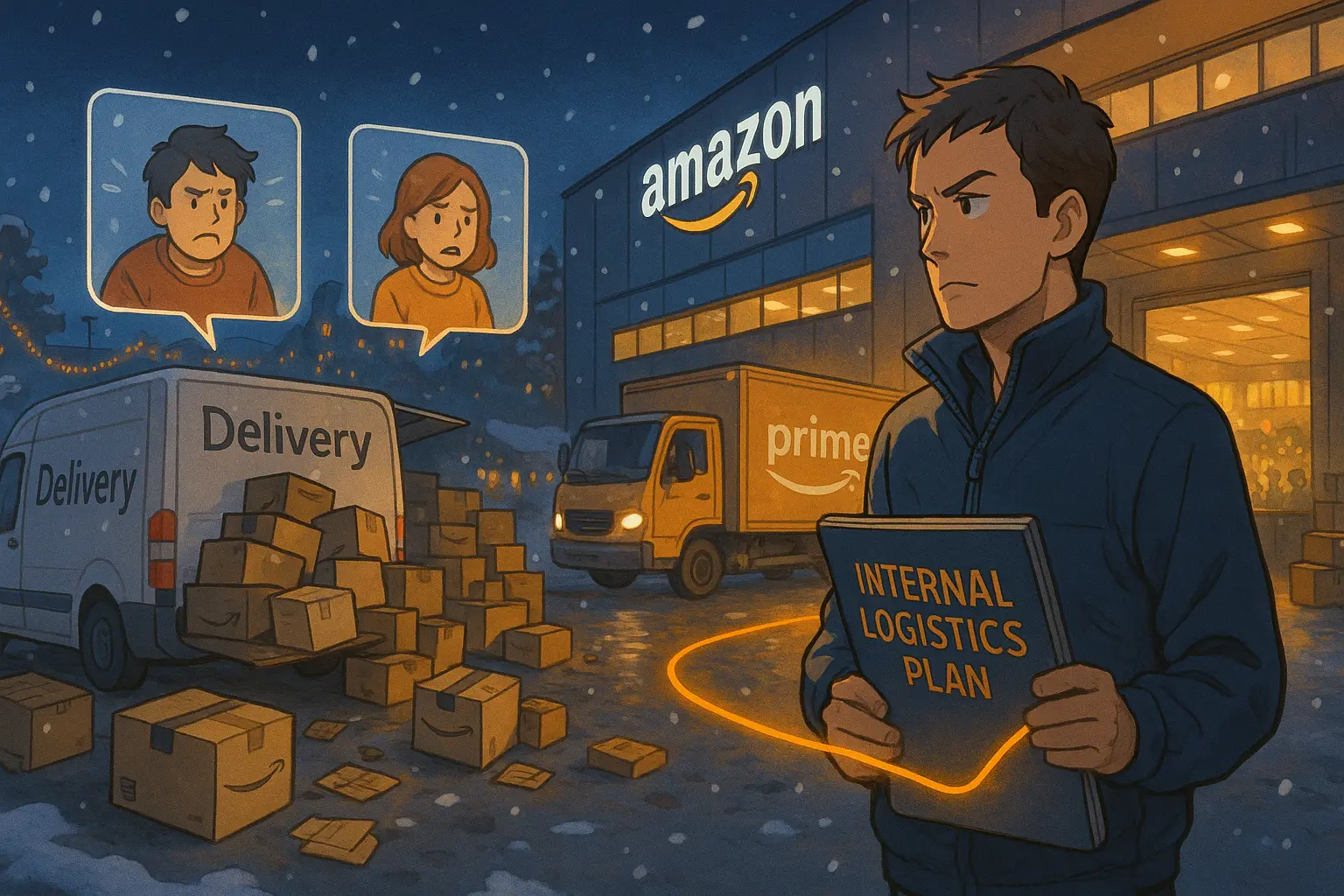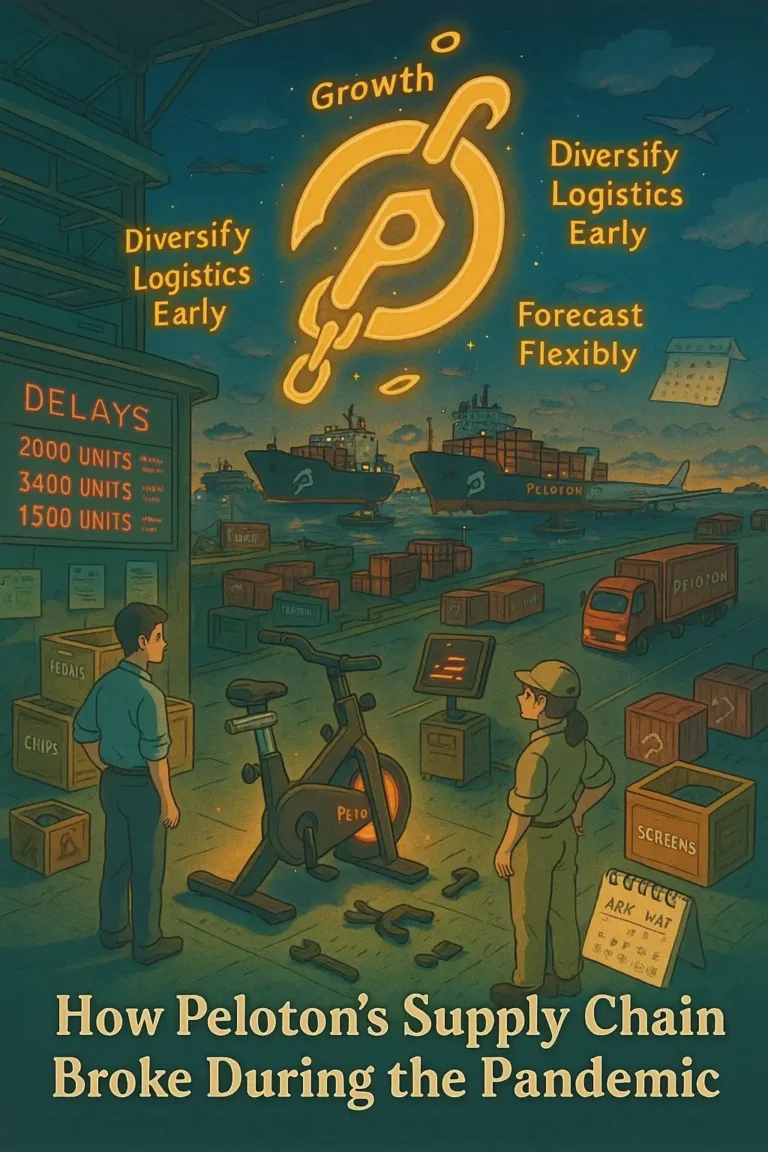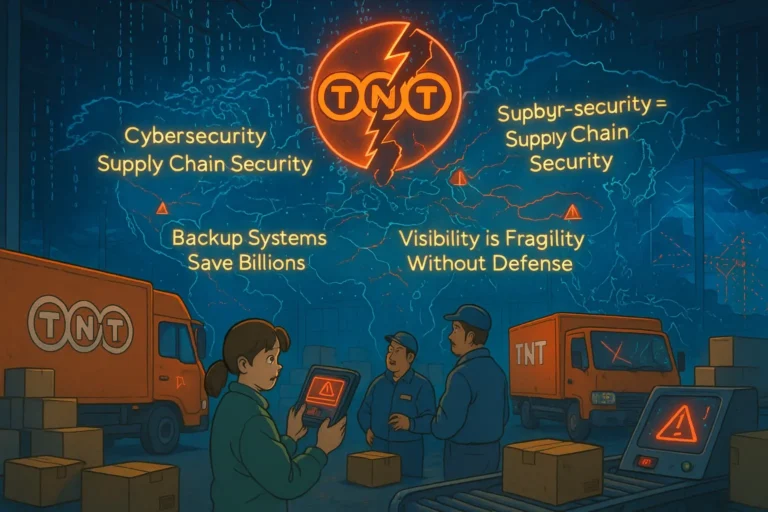
Amazon’s holiday delivery meltdown triggered a chain reaction, prompting the company to establish an internal logistics operation that rivals UPS and FedEx. But what happened, and how did Amazon react? Continue reading to find out.
Article Brief & Key Nuggets
- Amazon didn’t complain. It built a logistics empire instead.
- In 2013, Amazon faced a delivery failure that cost it money, trust, and control.
- The problem wasn’t inside Amazon’s warehouse—it was outside, in third-party carriers like UPS.
- Every business owner, especially in Africa, should rethink who controls the customer’s final experience.
- Real resilience comes from building—not borrowing—capacity.
Most business owners trust the carriers they hire. They believe, “Once it leaves our hands, it’s out of our control.” When working with the right partner, that belief may be okay, but things can still go wrong. It did for UPS, which is why Amazon’s holiday delivery meltdown happened.
The Problem Wasn’t the Package. It Was the Promise.
Amazon made a promise it couldn’t keep. Not because of what it did wrong, but because of what it trusted.
On December 23, 2013, Amazon received thousands of last-minute Christmas orders and promised delivery by Christmas Eve. UPS and FedEx were supposed to handle the last mile.
They couldn’t.
Packages missed the deadline, people were angry, and Amazon paid the price. To manage customers’ ire, the company issued $20 gift cards and refunded shipping costs. But money didn’t fix the damage. The trust had broken.
It was particularly painful for Amazon because the fulfillment systems had worked, warehouses packed the boxes on time, and the team did everything right.
The failure occurred in the transportation and logistics process, the final step of the fulfillment process, over which Amazon had limited control. However, the lesson hit home: even the most perfect systems fail if the final step is flawed.
That was the moment Amazon decided never to hand over that power again.
Read more: How DHL’s Warehouse Robotics Transformed Its Warehousing and Fulfilment.
Amazon’s Holiday Delivery Meltdown in 2013 Was a Ticking Clock
Poor delivery scheduling and planning were the reasons behind Amazon’s public failure in 2013, and why it now delivers more U.S. packages than FedEx.
Here’s what set off the explosion:
- Compressed calendar: In 2013, the holiday shopping window was shorter by six days. That squeezed last-minute shoppers into an even smaller gap.
- Aggressive delivery promises: Amazon lets people order gifts on December 23 with a promise to deliver them by Christmas.
- Huge demand spike: Online orders jumped 37% compared to the same time the year before.
- Bad weather: Winter storms hit multiple regions. Trucks stalled. Flights grounded.
- Carrier overload: UPS expected 7.75 million air packages on Dec. 23. It got far more. The system buckled.
UPS wasn’t ready, and FedEx couldn’t help. Although Amazon passed the packages on time, the delivery came late, and Amazon took the blame. But the real failure wasn’t in logistics—it was in trust.
Amazon’s Logistics Transformation Started with Control
Following Amazon’s Holiday Delivery Meltdown, the company did not fire UPS. Instead, it developed its own version, ensuring the company took control. But what looked like revenge was actually risk management.
After the meltdown, Amazon made the vital decision to own more of the supply chain. It didn’t happen all at once. But the direction was clear.
Here’s how Amazon took control:
1. The Trucking Shift: Branded Trailers
Amazon started with ground movement, buying thousands of its own branded trailers in 2015. Not trucks, just trailers. Outside, trucking companies hauled them. But the message was clear: Amazon’s freight gets priority.
By 2016, Amazon had 4,000 trailers moving between its warehouses and sortation centers.
Before this move, Amazon relied on others for space, but because space always ran out during peak season, the company was left scrambling. By owning trailers, Amazon locked in capacity and added speed.
When peak season came, there was no waiting and no begging.
2. The Delivery Revolution: Flex and DSP
Getting boxes from the warehouse to the doorstep is the most challenging part, so Amazon stopped outsourcing it. They created solutions that gave them more control. By 2018, the company quietly built operations that rivalled UPS with the following:
- Amazon Flex (2015): A mobile app that lets regular people become couriers. Sign in, pick up packages, and deliver them using your own car. It turned anyone with a phone and a tank of gas into a delivery option.
- Delivery Service Partners (2018): Small business owners could launch Amazon delivery fleets. Amazon provided the vans and routes. Local teams delivered the goods.
This gave Amazon a flexible and scalable delivery network. It grew fast and worked around labor shortages. By 2020, Amazon had over 1,700 DSPs and hundreds of thousands of Flex drivers.
3. Prime Air: From Boxes to Boeing
Air was the next frontier. In 2016, Amazon leased 40 Boeing 767s and branded them “Prime Air.” These weren’t partnerships; they were Amazon’s planes, running Amazon’s routes, for Amazon’s needs.
“We’re building core capacity to meet demand and offer new delivery options”, said Dave Clark, Amazon’s head of operations. Amazon took the air freight away from FedEx and made it an in-house advantage. With Prime Air, inventory that once took days now arrives overnight.
4. Sunday Service and Lockers: Unseen Channels
Amazon struck a quiet deal with USPS in 2013. It added Sunday deliveries in big cities. It also expanded its locker system—metal kiosks where customers could pick up packages without home delivery.
These moves provided Amazon with delivery options even when trucks were delayed or drivers were unavailable. One more way to own the experience.
5. Ocean Freight: Controlling Imports
In 2016, Amazon registered as a licensed ocean freight forwarder. That meant it could ship goods from China to U.S. ports under its own authority. The move cuts costs and also cuts risk.
By controlling cargo ships, Amazon made sure its warehouses had inventory—even when global ports were jammed.
Read more: Learning From the Mondelez Trucking Crisis of 2018.
Outcome Of Amazon’s Delivery Meltdown in 2013: From Client to Competitor
In 2013, Amazon depended on UPS. However, in 2020, Amazon delivered 67% of its U.S. packages itself and shipped 5.1 billion packages. UPS shipped 5.3 billion. And that gap has since closed.
Amazon went from a client to a competitor. FedEx ended its contract for small package ground deliveries with Amazon in 2019. UPS scaled down its share. Amazon now decides who gets what—and when.
The 2013 meltdown prompted Amazon to take action. The COVID-19 surge proved it right. As others choked, Amazon delivered. “We are erring on the side of having too much capacity.” Quote from Amazon’s CFO:
That decision gave Amazon power during the chaos.
Lessons: Amazon Did Not Blame the Carrier. It Built The Muscle
Amazon learned this lesson the hard way: You don’t control the promise if you don’t control the delivery. That’s the mindset shift.
Here are the takeaways for business owners:
1. Own the Last Mile If the Experience Matters
If your brand depends on timing or trust, don’t leave delivery to chance. Your customer remembers the moment the package arrives, and if it is not on time, it is dangerous. Own that moment.
For example, a meal kit service can’t afford late deliveries. A broken cold chain ruins the product. But investing in small cold vans beats refunds.
2. Build Capacity Before You Need It
Waiting for a problem to act is too late and very expensive. More than ever, it is important to invest early and build flexible systems that can grow fast.
For example, a grocery chain could partner with local motorbike fleets in urban areas, not just national carriers. When orders spike, they have the coverage.
3. Use People + Tech to Build Delivery Speed
Gig drivers, AI routing, and local warehousing. These aren’t luxury choices. They’re survival tools. For example, a fashion retailer can use WhatsApp-based routing apps to dispatch packages through casual drivers in Lagos or Nairobi.
4. Stop Trusting Third Parties to Manage Risk
Third-party carriers have their own limits. When they’re full, they drop your promise. Use them, but have a plan B.
For example, an African electronics distributor relying on a single trucking line should also consider leasing branded trucks or securing exclusive drivers during peak seasons.
Read more: How In-N-Out navigated the onion shortage of 2021.
Logistics Lessons From Amazon’s Holiday Delivery Meltdown for African Businesses
What Amazon faced in 2013 is happening every day in African markets. Packages disappear, drivers quit, and too much rain falls close roads. The question isn’t whether logistics will fail. It’s whether the business is ready when it does.
Here’s what works:
- Partner wide, not deep. Don’t rely on one transporter; work with three.
- Build local. Know your delivery zones and have pickup points near them.
- Train fast. Use mobile apps to onboard temporary couriers during holiday seasons.
- Forecast for chaos. Always expect 30% more demand than you think. Have the bandwidth before you sell.
African businesses don’t need jets. But they do need control. A branded tricycle, a shared warehouse, a local rider network—that’s how you own delivery without losing money.
Wrap Up
Amazon’s holiday delivery meltdown did not happen because it trusted bad people. It suffered because it trusted what it couldn’t see. Businesses that keep customers close build systems that never break. Systems that carry the brand all the way to the front door. Systems that deliver.

Obinabo Tochukwu Tabansi is a supply chain digital writer (Content writer & Ghostwriter) helping professionals and business owners across Africa learn from real-world supply chain wins and setbacks and apply proven strategies to their own operations. He also crafts social content for logistics and supply chain companies, turning their solutions and insights into engaging posts that drive visibility and trust.





